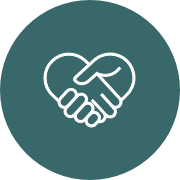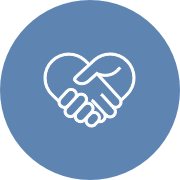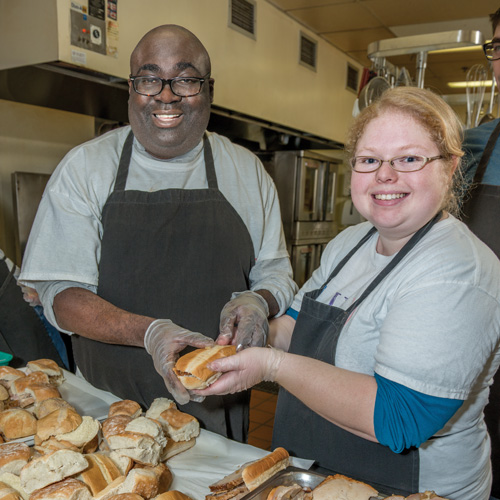
Clients give back
Mike arrives early to RHD Boston by about an hour. He’s taken the train to get there by himself, eager for the day to start. A client at RHD Boston, which provides residential, day and individual supports for men and women with developmental disabilities or a dual diagnosis of mental illness and/or physical disabilities, Mike is there because he’ll be working at a local soup kitchen, preparing and serving food for the homeless in nearby Lynn, Mass.
Mike is one of the many clients with intellectual disabilities at RHD Boston who volunteer behind the counter and in the kitchen to serve others at My Brother’s Table.
“The days are different when RHD is here,” said Sue Ellen Woodcock, the manager at the soup kitchen. “The people we serve pick up on the fact that people with intellectual disabilities are serving them lunch, and it really has an impact. They see there are other people who struggle, too, and they can see the smiles on their faces and they see the way they’re working. I think it’s made people feel differently about their own challenges.”
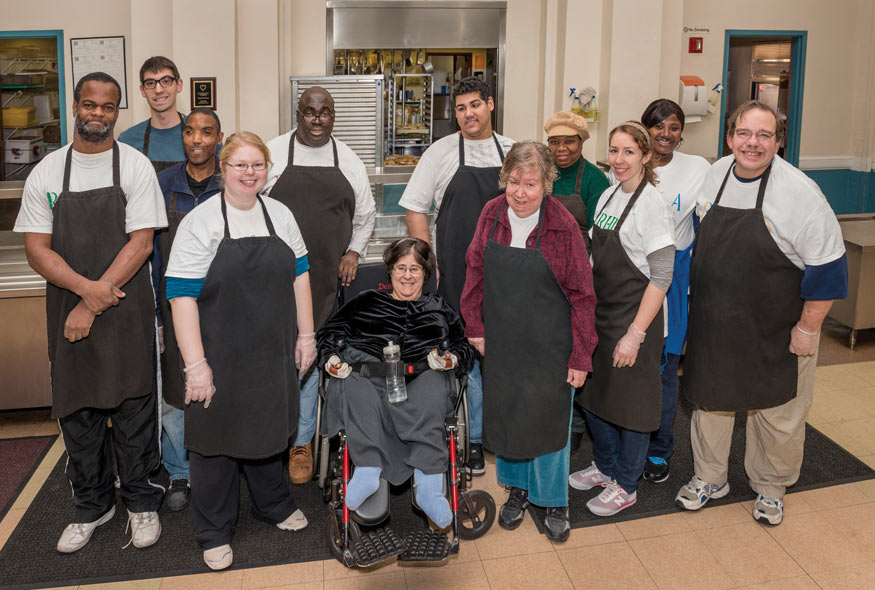
All RHD programs place a premium on community interaction. Clients don’t just participate in services in the community, they are active members of the community. But with this unique volunteer opportunity, RHD Boston’s individuals have the experience of giving back, empowering them as community members.
“The first time I went, it made me so sad I wanted to cry,” Mike said. “The people there are homeless, and they’re hungry. But then I felt so good because I could help them. It made me feel good to help people who are in need.”
Once a month, Marina Gans, a manager of three group homes at RHD Boston, gathers everyone who wants to go and volunteers at the lunch shift at My Brother’s Table — and everybody wants to go. It began as Gans’ project in RHD’s Leadership Development Program, which provides continuing education for career advancement and prepares employees to be better leaders.
“I always really wanted a project where our folks were recognized for the abilities and not their disabilities,” Gans said. “I wanted a project where they could give back. I knew it would be challenging, but I knew they could do it and I thought they’d get a lot out of it. We bring a lot of different people with different challenges, and they participate in the program in any way they can. People with disabilities are told all the time: ‘You can’t.’ Well, no — you can. We believe that people can.”
Each day more than 100 hungry people come through the doors at My Brother’s Table and lunch has to be ready. The staff at the kitchen does not accommodate the RHD group just to be nice; they have an often-hectic day to get through and volunteers there have to pull their weight. The individuals who volunteer are always on time, they work to clean and prepare the dining room, they make sure everyone gets fed, they finish every task on schedule to the satisfaction of Bud, the chef. Woodcock looks on at the bustling activity and says: “If you volunteer here, you have to be able to do the job. And I’ll tell you what, I’ve never had any complaints about this group. Not one. They’re really good.”
Individuals who stay with the project, volunteering at least three times, get T-shirts created at RHD Boston’s Outside the Lines art studio. They can customize the shirts to say anything they like, and wear their shirts with pride.
“It’s not just that they’re going to do this and have fun — although they do, and that’s important,” Gans said.
“They’re helping feed people who are hungry. They get so much out of it because they’re the ones helping others and that’s an empowering position to be in. It’s hard work, but they just light up when they do it. They rise above and beyond for this kitchen. Every time we’re leaving I always feel pretty beat, but they’re always smiling. The first time we did it, everyone asked me: When can I go again?”
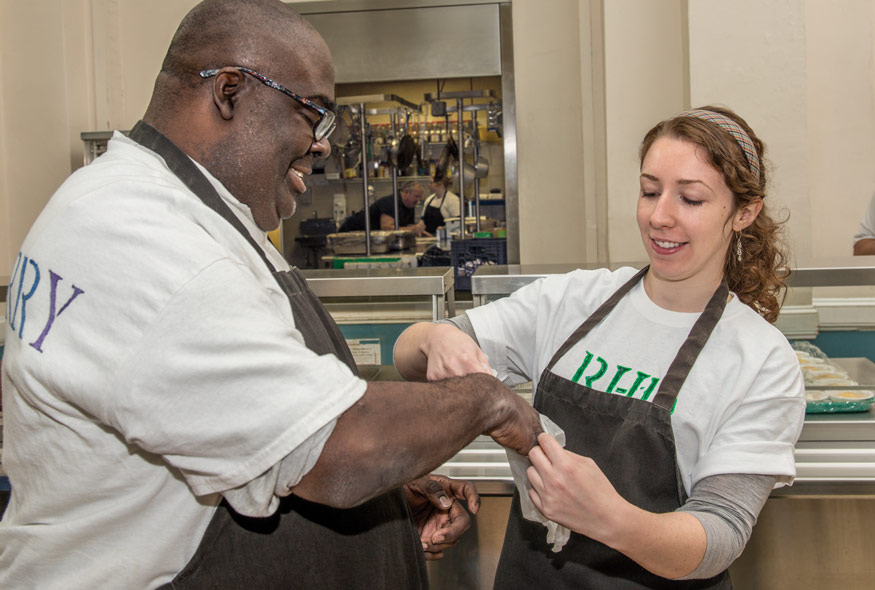
The first time Gans took clients to the soup kitchen, only a handful agreed to go. Now she averages 12-15 clients and staff who prepare and serve a variety of meals. They’ve become more accomplished in the kitchen as each client finds tasks they enjoy and works to get better at them.
“We started making peanut butter and jelly,” Gans said. “Now we’re up to pot roast.”
With 30 minutes before the doors open, the kitchen is buzzing. Robert and Michael playfully chide group home manager Fabiola Louis-Disla about her inability to keep up with them, Mike cautions his group to be careful opening up bags of rice (“Let’s not have an accident here!”) and site manager Sam Scribner carries a tray through all the people in the kitchen and shouts: “Hot soup! Coming through!”
James — who has worked in a kitchen before and eagerly lent his experience — expertly chops vegetables and slices turkey. Nancy is finishing a tray of sandwiches as someone asks her how she’s doing and she flashes a thumbs up and says: “Hundred percent!”
Gans gets the cafeteria line in order and hands out the assignments: “You’re on sandwiches; you’re on soup; you’re on coffee …” Everyone assembles as the doors open. Denise is in a wheelchair and she moves to the head of the cafeteria line. She’s the greeter, counting each diner to help keep track of how much food they’ll need through the day. The people moving through the line thank her on their way out, and she says: “Have a great day!
“Everyone is so nice,” Denise says.
Someone observes that people usually are nice when you’re helping them, and Denise says: “I like that I can be the one who’s helping other people.”
After lunch, the crew cleans up and wraps the leftovers. Robert and Michael bus the tables and stack the chairs. Mike approaches Sue, a little tentative, but there’s something he wants to ask. He overheard the diners talking about the holidays. He asks if he can come back, on his own, and volunteer on Thanksgiving.

